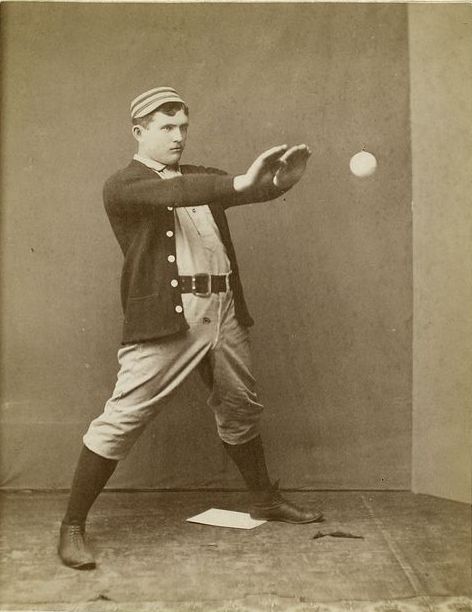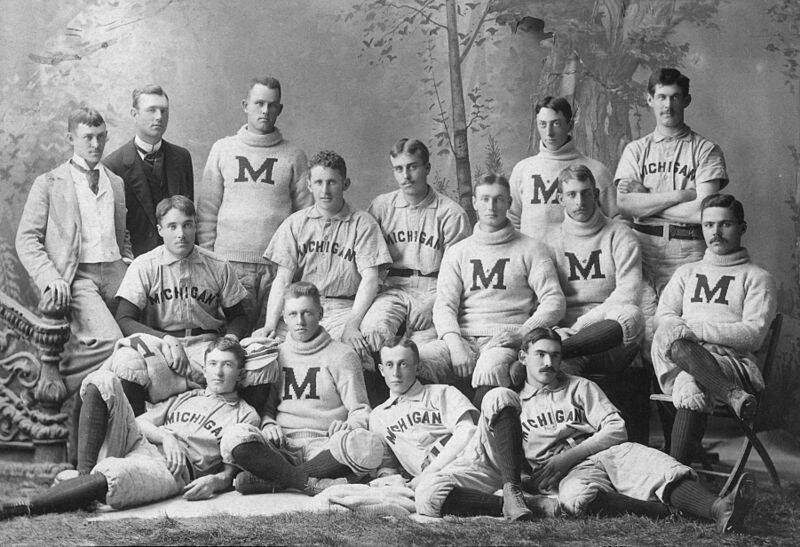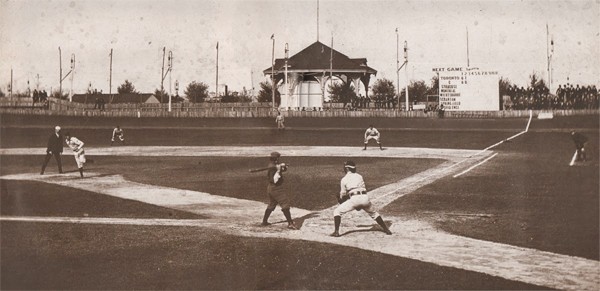Aspect of history
The origin of baseball has been the subject of controversy and controversy for over a century. Baseball and other modern bat, ball and run games – cricket and rounds – were developed from folk games in early Britain, Ireland and mainland Europe (e.g. France and Germany). The early forms of baseball had several names, including “baseball”, “assist ball”, “round ball”, “fetch and catch”, “stool ball” and simply “basic”. In at least one version of the game, teams have smashed against each other, with runners going around the bases in the opposite direction of today’s game, much like Nordic brännboll, and players could be knocked out by getting hit by the ball. Just as now, in some versions the striker is called after three strikes.
Although much is obscure, as one would expect from children’s games of old, what is known is that by the mid-18th century, a game appeared in the south of England in which it was necessary to score a pitched ball, and then start a base pattern. “Baseball” was at least one name for this proto-baseball, although there may have been others. The English colonists brought the game to America along with their other pastimes, and in the early 1800s it was played under different names on both sides of the ocean. However, in the mid-19th century, the game was greatly modified by the male amateur ball clubs in and around New York City, and it was this highly redesigned sport that became modern baseball.

Folk games in early Britain, Ireland and continental Europe
A game with similar throws and striking elements to baseball. ‘Songs of Saint Mary’, 13th century.
A number of the folk games of early Britain and continental Europe had characteristics that can be seen in modern baseball (and also in cricket and rounders). Many of these early games involved the ball being thrown at a goal while the opponent was defending the goal in an attempt to hit the ball. If the batter hit the ball successfully, he could try to score by running between the bases while the fielders would try to catch or pick up the ball and get the runner out. Folk games have varied in time, place, and culture, resulting in similar but variable forms. These games did not have standard documented rules and were instead played according to historical customs. These games were usually played by the working class, peasants and children. Early folk games were often associated with earlier religious ceremonies and worship rituals. These games ceased to be encouraged and were even banned outright by subsequent ruling states and religious authorities.
Apart from the obvious differences in terminology, the games differed in the equipment used (ball, bat, club, target, etc.). usually just whatever was available), the way the ball was thrown, the method of scoring, the method of giving outs, the location of the field, and the number of players involved. In a very broad sense, these games can be roughly divided into forms of longball, where the batter runs out to one point or line and back, as in cricket, and circular ball, where there was a chain of several bases. There were also games (for example, a stool ball, trap ball) in which there was no running at all.
Oina
Oina is a Romanian traditional sport, a kind of longball, in many ways similar to bast shoes.
Originally the name “oyna” was “hoina”, and is derived from the Cuman word oyn “game” (cognate with Turkish oyun). The oldest direct reference is in a 1782 dietary guide compiled by a physician, which talks about the health benefits of oyna.
In 1899, Spiru Haret the Minister of Education decided that oyna should be played in schools in physical education classes. He organized the first annual oyne competitions.
The Romanian Federation of Oina (“Federaţia Română de Oină”) was founded in 1932 and resumed its activity in the early 1950s, after a short period when it was dissolved.
Today there are two Oine federations, one in Bucharest, Romania and the other in Chisinau, Moldova.
Chairball
In an 1802 book entitled The Sports and Amusements of the People of England, Joseph Strutt claimed to have shown that baseball-like games date back to the 14th century, in particular the English game called stoolball. The earliest known reference to the stool is in a 1330 poem by William Pagula, who recommended that priests ban playing in cemeteries.
In Stoolball, one player throws the ball at a goal and the other player defends the goal. Initially, the target was defended with bare hands. Later, some kind of bat was used (the modern stool uses a racket like a very heavy table tennis racket). “Stubball” and “Stocked Ball” were stool-like regional games. What was originally the target in the stool is not known; it may have been a stump, since “stob” and “lay” in some local dialects mean a stump. (“Stow” can also refer to the type of frame used in mining). It is noteworthy that in cricket to this day the wicketposts are called “stumps”. Of course, the target could very well be anything, perhaps even a gravestone (hence Pagula’s objection to church games). A book on games from the 17th century specifies a stool.

According to one legend, milkmaids played stools while waiting for their husbands to return from the fields. Another theory is that the stool originated as a game played after attending church services, in which case the target was probably the church stool. The 18th-century poem depicts men and women playing together (the women use their aprons to catch balls), and this and other references link the game especially to the Easter season.
There were several versions of the stool. In the earliest versions, this object was used primarily to protect the stool. One point is scored for a successful stool defense, and the batter is out if the ball hits the stool. There was no running. Another version of the stool involved running between two chairs and the scoring was similar to cricket scoring. Perhaps in another version there were several chairs, and points were scored by running around them, like in baseball.
When the British came to America, they brought a stool with them. William Bradford, in his diary for Christmas 1621, noted (with disapproval) how the people of Plymouth “frolicked in the street, played openly; someone was throwing a ball, someone was at a ball, and so on – like a sport.”
Because of the different versions of the stool, and because it was played not only in England but also in colonial America, the stool is considered by many to be the common ancestor of cricket, baseball, and rounds.
Dog and cat
Another early folk game was “dog and cat” (or “cat and dog”), which probably originated in Scotland. In the game Cat and Dog, a piece of wood called a cat is thrown into a hole in the ground while another player defends the hole with a stick (dog). In some cases there were two holes and after hitting the cat the batter would run between them while the fielders tried to pull the runner out by driving the cat into the hole before the runner could get to it. Thus, the dog and the cat resembled a cricket.
Horne-billets
This game, otherwise unknown, was described in Francis Willoughby’s Book of Games (circa 1670), which included rules for over 130 games, including stool. -bol and collapsible ball. Notably, it featured both a bat and a base run, although it was played with a wooden cat rather than a ball, and the numerous “bases” were holes in the ground: the batter reached safety by ending his bat. in the hole before the fielders had a chance to get the cat in. This echoes the style of scoring in cricket where the bat touches the ground through the crease before the fielders can hit the nearest wicket with the ball.
Trap ball
In the trap, played in England since the 14th century, the ball was tossed into the air for the batsman to hit and field. In some variations, a team member tosses the ball into the air; in some, the batter tossed him up like a mushroom; in other cases, the batsman tossed the ball into the air using a simple linkage mechanism: versions of this, called the bat and trap and Knurr and spell, are still used in some English pubs. There was no running in trap ball, instead the fielders tried to hit the ball a certain distance from the batter’s seat. The ball trap may be the origin of the concept of foul lines; in most variations, the ball had to hit between two posts for scoring.
A similar game was type-cat; here “cat” was an oblong piece of wood (as in the word “dog and cat”); it tapered towards each end, like a rugby ball or an American football, so that when hit with one end it would be thrown into the air much like a snare in a trap ball, so that it could be hit with a stick or bat.
Base
The old English game called “base” or “prisoner base” described by George Ewing in Valley Forge didn’t seem to be much like baseball. There was no bat, no ball. The game was more like a fancy team game, although it shared the concept of safe places, bases, and baseball.

Cricket
The history of cricket before 1650 is something of a mystery. Games believed to have been similar to cricket were developed by the 13th century. There was a game called “creag” and another game “Handyn and Handoute” (“Hands in and hands forward”), which were banned in 1477 by King Edward IV, who considered the game childish, and a distraction from the obligatory archery.
References to the game actually called “cricket” date back to around 1550. It is believed that the word “cricket” is derived either from the word cric, which means a crooked stick (cognate with the English Crook): early forms of cricket were used. a curved bat, somewhat reminiscent of a hockey stick; or the Middle Dutch word hockey, met de (krik ket) sen (“chasing the stick”), or the Flemish word “krickstoel” for a stool on which one kneels. the church that the early long, low gate looked like. The word is etymologically related to French croquet – early forms of which were also played with a curved stick rather than a mallet.
The earliest known reference to baseball as a child’s game dates from the same year (1744) when the Ordnance Laws formalized the rules for what was already a first-class, nobility-sponsored, professional sport in which huge stakes were placed.
The English colonists played cricket along with other games from home and this is mentioned many times in 18th century American sources. As an organized sport, the Toronto Cricket Club was founded in that city by 1827, and St. George’s Cricket Club was founded in 1838 in New York (membership limited to men of British origin.). The two clubs met in the first international cricket game in 1844, which Toronto won by 23 runs. Many of the early New York club baseball players also played cricket, and the earliest recorded interclub baseball game was played at the Union Star Cricket Grounds in Brooklyn.
